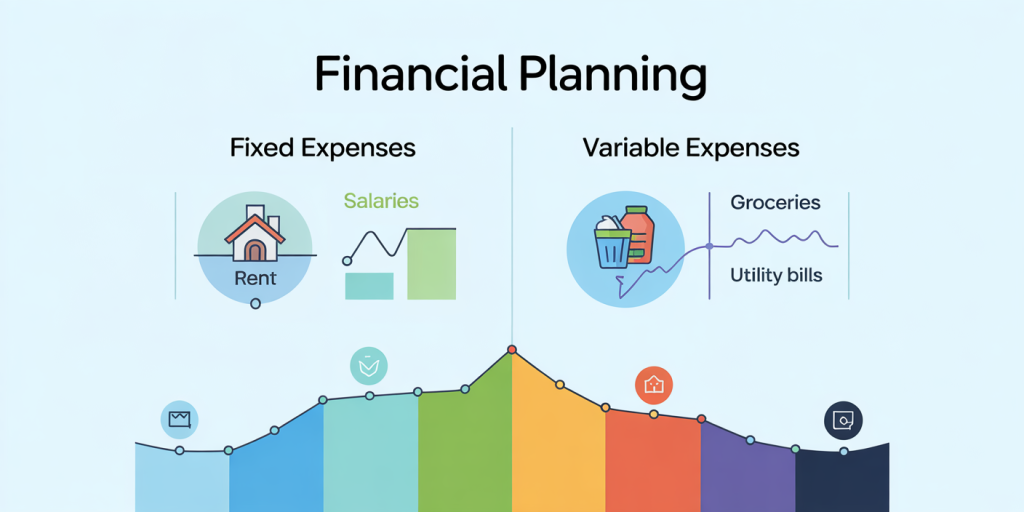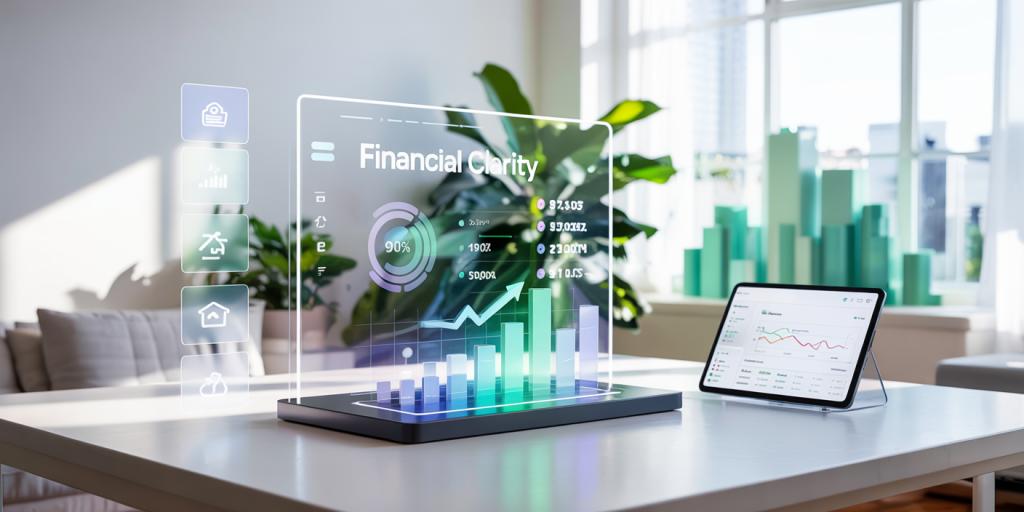Fixed vs. Variable Expenses: What’s the Difference?
Managing personal or business finances efficiently requires a deep understanding of different expense types, primarily fixed and variable expenses. Recognizing the distinction between these can empower individuals and businesses to make informed budgeting decisions, improve financial stability, and optimize cash flow management. This article explores fixed and variable expenses in depth, providing practical examples, comparative tables, and insights backed by data and real case scenarios.

Understanding Expense Categories in Financial Management
Expenses can broadly be classified into two major categories based on their consistency and variability over time: fixed expenses and variable expenses. Fixed expenses are costs that remain constant over regular periods, while variable expenses fluctuate depending on the level of consumption or operational activity.
For instance, consider a working professional who rents an apartment. The monthly rent payment is a fixed expense because it remains the same every month regardless of personal activities or consumption habits. Conversely, monthly electricity bills vary according to usage and thus qualify as variable expenses. This simple dichotomy is the cornerstone for effective budgeting.
Classifying expenses properly is vital for both individuals managing household budgets and businesses planning operational costs. According to a report by the Consumer Financial Protection Bureau, nearly 60% of Americans struggle with managing variable expenses due to unpredictability, which highlights the significance of distinguishing these expense types for better financial planning.
Defining Fixed Expenses: Stability and Predictability
Fixed expenses are recurring charges that remain unchanged over a specified period, often monthly. These expenses provide predictability and a stable baseline in budgeting processes, allowing individuals and organizations to plan cash flow accurately.
Common fixed expenses in personal finance include rent or mortgage payments, insurance premiums, subscription services, and loan repayments. In business contexts, fixed expenses can also include lease payments on office space, salaries of permanent staff, insurance, and depreciation costs.
To highlight, a business paying a $5,000 monthly lease for their office space has this payment classified as a fixed expense. This means even if business operations slow down or sales drop, the lease payment remains payable in full. This constancy demands consistent planning to ensure funds are available to cover these obligatory expenses. Consequently, large fixed expenses may increase financial risk but also provide the stability needed for long-term strategic planning.
Exploring Variable Expenses: Flexibility and Fluctuation
Variable expenses, unlike fixed expenses, fluctuate with changes in usage, production volume, or activity levels. These costs are flexible and can often be controlled or adjusted more easily in response to financial needs.
Examples of variable expenses in personal finance include groceries, utility bills (which depend on consumption), gasoline, dining out, and entertainment expenses. In a business environment, variable expenses often include raw materials, commission payments, shipping costs, and utility costs that scale with production levels.
To illustrate, an online retailer may spend $10,000 on raw materials during a busy season but $4,000 during a slower season. This variation correlates directly with sales performance and production volume, emphasizing how variable costs adjust with operational demands.
Managing variable expenses effectively can yield cost savings and improve cash flow flexibility. For instance, reducing discretionary expenses like dining out or entertainment is a common way consumers adapt to tighter budgets. Businesses might negotiate utility usage or streamline inventory purchasing to trim costs.
Comparing Fixed and Variable Expenses: Key Differences and Practical Implications
Understanding the differences between fixed and variable expenses is crucial for effective budgeting, forecasting, and financial control. The table below summarizes the main distinctions:
| Feature | Fixed Expenses | Variable Expenses |
|---|---|---|
| Nature of cost | Constant over time | Changes with usage or production |
| Predictability | High | Low |
| Control | Often less controllable in short-term | More controllable and adjustable |
| Examples (Personal) | Rent, insurance premiums, loan payments | Groceries, utilities, gasoline |
| Examples (Business) | Lease payments, salaries, insurance | Raw materials, commission, shipping |
| Impact on Budget | Provides a baseline for planning | Requires ongoing monitoring |
From a financial planning perspective, fixed expenses provide a constant base that must be met regardless of income fluctuations. This characteristic increases financial risk during downturns but provides stability for long-term financial commitments. Variable expenses afford flexibility to adapt spending according to income or cash flow changes, which can be a strategic advantage during unpredictable periods.


Real-world case studies show differing approaches to expense management. For example, small businesses often struggle with balancing fixed salaries and rent with variable sales-driven expenses. According to data from the Small Business Administration (SBA), businesses that maintain variable expenses at or below 30% of total expenses tend to fare better during economic downturns by maintaining better liquidity.
Practical Budgeting Tips Based on Expense Types
Effectively managing fixed and variable expenses requires tailored strategies. For fixed expenses, the focus is often on ensuring that steady income streams or reserves are available to cover these costs reliably. One practical approach is to automate payments to avoid late fees and reduce administrative burdens, ensuring fixed expenses are met without fail.
An example is an individual automating monthly rent and insurance payments, which removes the risk of missed payments and reduces stress. Similarly, businesses can negotiate fixed expenses or opt for lease terms and contracts that allow some flexibility or renegotiation options.
Variable expenses require ongoing monitoring and adjustment. Keeping detailed records and tracking spending regularly can reveal saving opportunities. For instance, personal finance apps that track spending habits can alert users when variable costs exceed budgeted thresholds.
One illustrative case involved a mid-sized company that saved 15% annually on utility and raw material costs by implementing a monthly review of consumption and renegotiating supplier contracts. They adapted production to reduce waste and optimize resource use, directly cutting variable expenses.
Another useful approach is setting variable expense limits within a budget, such as capping dining out or discretionary spending to a certain percentage of monthly income, which provides control without feeling overly restrictive.
Impact of Expense Types on Financial Health and Decision Making
The ratio of fixed to variable expenses significantly affects financial health, risk tolerance, and decision-making capacity. A higher proportion of fixed expenses means that a larger amount of income is committed, reducing financial flexibility. This scenario, referred to as “operating leverage” in business finance, can amplify profits during good times but intensifies losses during downturns.
According to a report by Deloitte on SME financial resilience, companies with more than 60% fixed costs are twice as likely to encounter liquidity challenges during revenue drops compared to those with more variable cost structures. This statistic highlights the strategic importance of balancing expense types according to risk appetite and market volatility.
On a personal level, excessive fixed expenses such as high mortgage payments or car loans can constrain monthly cash flow, making it difficult to adjust lifestyle or save for emergencies. Conversely, households maintaining a balanced expense profile often demonstrate higher savings rates and lower debt default incidences according to data from the Federal Reserve.
Decision making is influenced by expense structure. For example, during economic uncertainty, business leaders might prioritize reducing fixed expenses to lower breakeven points, enhancing survivability. In contrast, during expansion periods, absorbing higher fixed costs may be justified to scale operations efficiently.
Future Perspectives: Trends and Innovations in Managing Fixed and Variable Expenses
The landscape of expense management is evolving alongside technological innovation and changing economic conditions. Digital tools, artificial intelligence, and data analytics are increasingly employed to optimize monitoring and management of both fixed and variable expenses.
For example, smart home devices now allow consumers to better control energy consumption, thereby reducing variable utility expenses. Similarly, subscription management platforms help identify and eliminate underused recurring fixed costs such as software licenses and streaming services.
In businesses, predictive analytics enable forecasting variable expense fluctuations based on historical data and market trends, empowering proactive adjustments. Cloud-based financial software automates expense tracking, classification, and alerts, increasing budgeting accuracy and efficiency.
Moreover, flexible expense agreements, such as pay-as-you-go leases or gig economy labor models, blur the traditional boundaries between fixed and variable expenses, providing hybrid models contributing to greater financial agility.
Economically, the recent global trend towards remote work has altered many fixed costs for businesses, reducing office lease expenses but potentially increasing variable costs like home office subsidies and technology expenses. This shift highlights how evolving work models impact the composition and management of fixed versus variable expenses.
In summary, understanding and managing fixed and variable expenses remains fundamental to robust financial health. By leveraging emerging tools and adapting to economic dynamics, individuals and businesses can achieve enhanced control and resilience in their financial planning and operations.
